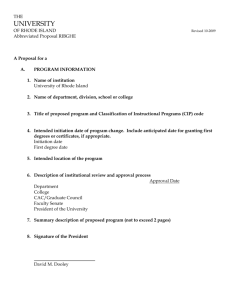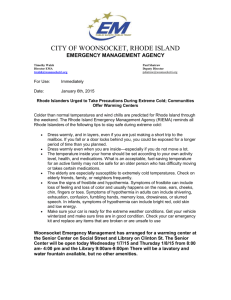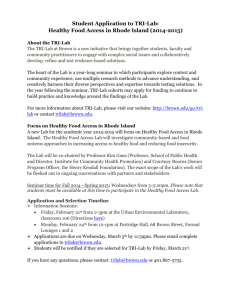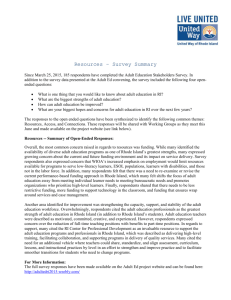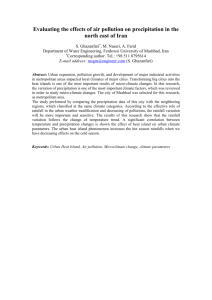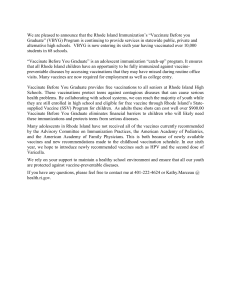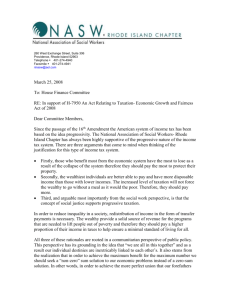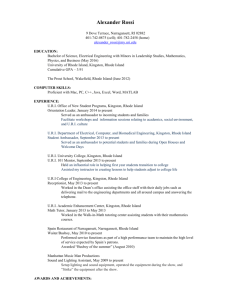Documented Climate Trends
advertisement
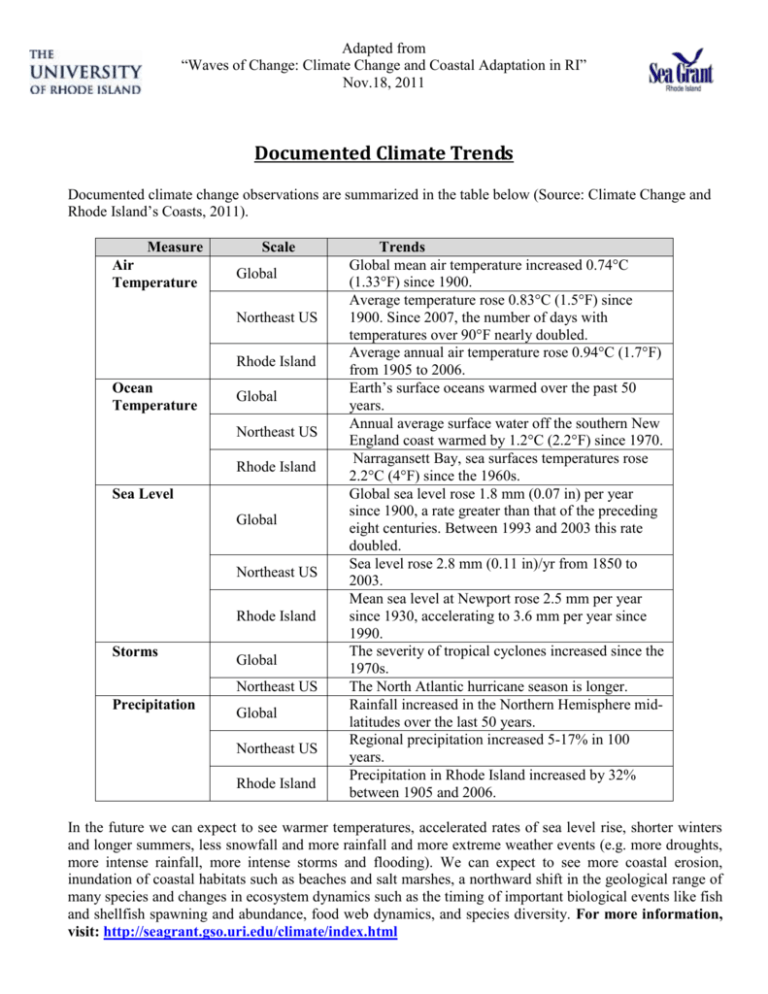
Adapted from “Waves of Change: Climate Change and Coastal Adaptation in RI” Nov.18, 2011 Documented Climate Trends Documented climate change observations are summarized in the table below (Source: Climate Change and Rhode Island’s Coasts, 2011). Measure Air Temperature Scale Global Northeast US Rhode Island Ocean Temperature Global Northeast US Rhode Island Sea Level Global Northeast US Rhode Island Storms Global Northeast US Precipitation Global Northeast US Rhode Island Trends Global mean air temperature increased 0.74°C (1.33°F) since 1900. Average temperature rose 0.83°C (1.5°F) since 1900. Since 2007, the number of days with temperatures over 90°F nearly doubled. Average annual air temperature rose 0.94°C (1.7°F) from 1905 to 2006. Earth’s surface oceans warmed over the past 50 years. Annual average surface water off the southern New England coast warmed by 1.2°C (2.2°F) since 1970. Narragansett Bay, sea surfaces temperatures rose 2.2°C (4°F) since the 1960s. Global sea level rose 1.8 mm (0.07 in) per year since 1900, a rate greater than that of the preceding eight centuries. Between 1993 and 2003 this rate doubled. Sea level rose 2.8 mm (0.11 in)/yr from 1850 to 2003. Mean sea level at Newport rose 2.5 mm per year since 1930, accelerating to 3.6 mm per year since 1990. The severity of tropical cyclones increased since the 1970s. The North Atlantic hurricane season is longer. Rainfall increased in the Northern Hemisphere midlatitudes over the last 50 years. Regional precipitation increased 5-17% in 100 years. Precipitation in Rhode Island increased by 32% between 1905 and 2006. In the future we can expect to see warmer temperatures, accelerated rates of sea level rise, shorter winters and longer summers, less snowfall and more rainfall and more extreme weather events (e.g. more droughts, more intense rainfall, more intense storms and flooding). We can expect to see more coastal erosion, inundation of coastal habitats such as beaches and salt marshes, a northward shift in the geological range of many species and changes in ecosystem dynamics such as the timing of important biological events like fish and shellfish spawning and abundance, food web dynamics, and species diversity. For more information, visit: http://seagrant.gso.uri.edu/climate/index.html
